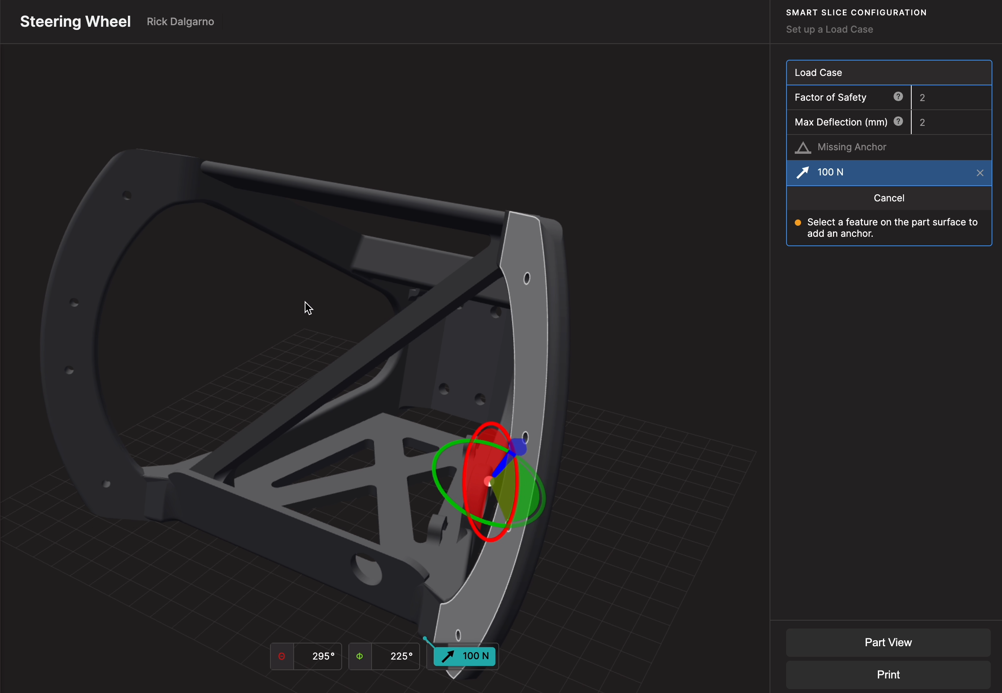When it comes to manufacturing parts, confidence is everything. Engineers understand that additive manufacturing (AM) can be used to print jigs, fixtures, tooling and production components. Whether they choose to use the technology for critical end-use parts and applications, however, generally comes down to their level of confidence in whether or not the part is stiff and/or strong enough to withstand the rigours of use.
Related content
Finding a definitive answer to the question ‘how strong is strong enough?’, however, hasn’t always been easy to quantify. Traditionally, the best way to determine strength has been through one of two options: (1) trial and error - to print, test and iterate each design – or (2) to overdesign the part and hope that will work. Neither approach is ideal and both result in wasting valuable time, materials and throughput, all adding up to increased costs and significantly narrowing any advantages AM has over traditional machining.
Confidence through validation
On the other hand, virtual testing helps engineers at the manufacturing stage by automating the validation process for end-use printed parts. Software like Markforged’s Simulation essentially provides engineers with the detail, information and confidence they need to balance the settings to meet the functional requirements.
It not only gives them a ‘thumbs up’ or ‘thumbs down’ as to whether or not the part will work, but also provides engineers with a number of options to choose the optimal way to print the part based on their specific requirements – whether it’s cost, material use, print time, strength or stiffness.
Any user can validate part strength and stiffness through virtual testing by identifying anchor and load surfaces and then entering values for loads, factor of safety and maximum deflection. They can then optimise parts by automatically determining print settings for floors, walls, infill and reinforcement to achieve print cost and speed goals while maintaining adequate strength.

By providing a complete description of how the part will perform after its built, Simulation not only eliminates guesswork, but instils the all-important confidence that CAD and CAE can’t yet provide. Ultimately, it empowers engineers, giving them the confidence they need to know that the part they print the first time will have the required strength for demanding industrial applications.
Reducing lead times: a speedier route to customisation
US-based Larsen Motorsports builds jet engine drag racing vehicles that reach speeds beyond 280mph. To ensure safety at such velocities, each driver needs their own custom steering wheel that can withstand more than 180 pounds (approx. 82 kilograms) of force pulling on one side at any given time. Performing in these demanding conditions inevitably leads to the need for regular replacements, but with limited storage space and a lead of eight or more days, using traditionally manufactured methods was not a viable option for the team.
Fuelled by the need to cut lead times without compromising on safety led Larsen Motorsports to work with Markforged to explore alternative routes for their drivers’ bespoke steering wheels. To test and iterate the design, they ran the design specs of rookie driver Josette Roach’s bespoke aluminium steering wheel through its Simulation software, allowing them to arrive at the right strength, size and stiffness to meet Josette’s rigorous requirements – and to print a Continuous Carbon Fibre reinforced Onyx™ steering wheel strong enough to replace her aluminium one. “I trust the steering wheel with my life,” said Josette.

The whole process took only two days, eliminating the need to print multiple part designs. Brian Tocci, Director of Operations, Larsen Motorsports noted, “We don't have to print ten different parts. We can do it all in Simulation."
Material viability
Using Simulation also helped the Larsen Motorsports team to explore alternative materials. While the benefits of carbon fibre as a material are widely understood, it has still been shied away from when it comes to printing parts, largely due to its high price tag.
Even using small amounts of CF in the right places can add strength without extra weight, making it a viable replacement for metals like aluminium for industries such as motor racing, where every milligram matters.
Tools like Simulation help bridge this knowledge gap by clearly mapping out where you need carbon fibre reinforcement and where you don’t in specific parts. This information empowers engineers to better understand how to make the most of materials like CF in AM – without breaking the budget.
The power of the cloud
The validation process that answers the question ‘is this going to work?’ for any given part design demands computing power. If left to a single computer, the memory and computing power required to run the software would bog it down, hindering productivity. By running simulations using secure cloud-based software, however, the load is spread across machines. The cloud not only provides the elasticity required to balance the load, but the ability to explore a wider bank of knowledge and data, applying it to each build and serving it back to the engineer.
It is this flexibility and ability to source data that will ensure software simulation can continue to learn and evolve, improving user experiences and empowering engineers with the confidence that the parts they print will perform the way they should.

Doug Kenik is Principal Product Manager, Strategy at Markforged











Water Sector Talent Exodus Could Cripple The Sector
Maybe if things are essential for the running of a country and we want to pay a fair price we should be running these utilities on a not for profit...